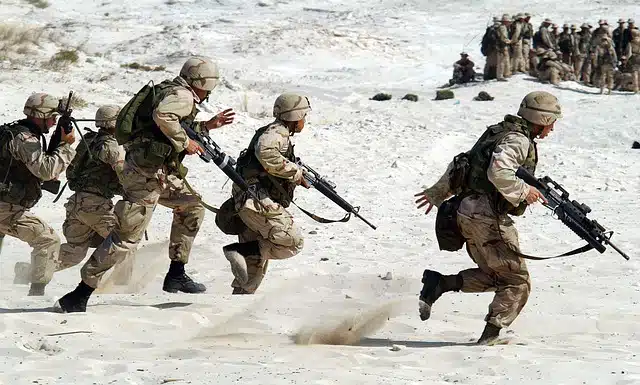
The adjective military denotes a relationship with the military field.
The etymology of castrense takes us to the Latin castrensis , which refers to something related to the army or the camp . This word, in turn, derives from castra (translatable as “camp” ).
from the army
The military, therefore, is linked to the military sphere . It is an adjective that allows you to describe something that belongs to the field of the army or armed forces .
The idea of military discipline , in this framework, refers to the standards of conduct that the members of a military force must respect. These strict guidelines allow for the regulation of behavior and establish limits and obligations.
The military high command , meanwhile, is made up of the top officials of the military institutions. It includes the highest-ranking officers, who make decisions regarding the direction and organization of the army.
Military education , finally, refers to the instruction received by those who join the armed forces. This training includes academic and technical issues, but also specific values .
Some examples
Let's look at some example sentences to put this term in context: “The military institution will celebrate its fortieth anniversary tomorrow with a gala dinner,” “Our National Constitution prohibits military participation in internal security tasks,” “The case will be analyzed by the military justice, which must make a decision before the end of the month.”
Military Ordinary
The particular Church of Catholicism focused on spiritually assisting the faithful who are in the armed force is known as the Military Ordinariate . Expressions such as military curia , military bishopric , military chaplain and military archbishop , among others, appear in relation to this entity.
More than a thousand years ago, the Church began to provide help to Christian soldiers on the level of the soul, through its deacons and priests. At a hierarchical level, these two figures had to respond to the military chaplain . Although at first the authority of the bishop over all of them was extreme, over time they acquired greater freedom when making decisions, beginning in Spain, in the second half of the 16th century, and later in Austria and Sardinia, in the 18th century.
After the historical event known as the taking of Rome , which put an end to the unification of Italy that represented the Resurgence , the figure of the military chaplain was losing strength because his link with the Apostolic See had become too fragile; Finally, in 1878, it ceased to exist. This changed in 1915, when Italy entered the First World War , since Field Marshal Luigi Cardona managed to revive it, assigning one chaplain per regiment. Shortly after, the field bishop emerged, to whom chaplains throughout the country had to answer.
military archbishopric
In Spain, the military ordinary is known as the Arzobispado Castrense . The history of this role takes us to the beginning of the 18th century, when Carlos de Borja Centellas Ponce de León assumed the position of vicar general. In 1762, they began to use the title of senior chaplain , as a figure who was in charge of assisting soldiers of all armies.

The military ordinary provides spiritual support to the soldiers.
Although this position was maintained after the 1851 concordat with the Holy See, at the end of the Second Republic it lost validity in the military field . It was only in the second half of the 20th century that it was restored in a new concordat.
The jurisdiction of the military archbishopric covers believers in the military field who respect the Latin liturgical rite, regardless of whether they are in a foreign territory, since they do not lose their spiritual relationship with the Church of their country. Although this ordinary has a clergy at his disposal, they also receive the help of priests assigned by the bishops to fulfill their obligations.
